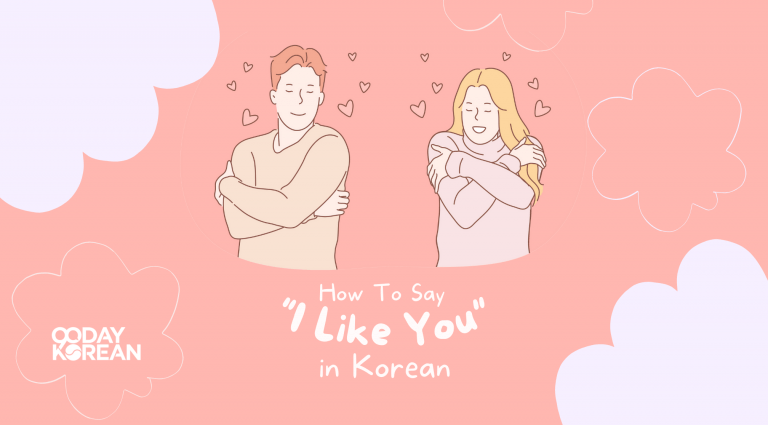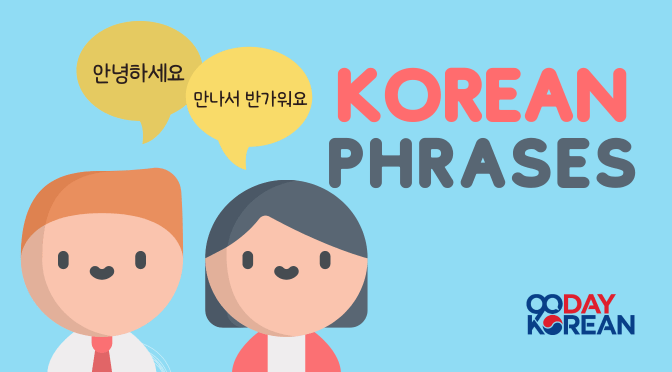In this article, we will tell you how to make your Korean friends feel great by learning how to say “I like you” in Korean! We know it’s always nice when somebody says that they like you, so why not learn the phrase in Korean? You might have also heard this phrase from your favorite K-drama or Korean songs.
When learning Korean, any shortcuts that you can find are beneficial. In Korean sentences, the subject and object (for example, “I” and “you” in the phrase “I like you”) are often not said. Instead, they are implied.
This gives learners of the language a massive and powerful shortcut. If you know how to say “I like you,” you also learn to say “I like it.”
Here’s a free resource that you can bring anywhere as you learn how to say “I like you” in Korean:
Let’s get to it so you can start expressing your likes!
Contents
“To Like” in Korean
The verb “to like” in Korean is 좋아하다 (joahada). This verb will be the basis of all of this article’s expressions. This verb is also a 하다 (hada) verb. This type of verb is very common in Korean.
Once you know how to use one “had” verb, you know how to use them all. This makes 좋아하다 (joahada) a very useful verb to know when studying Korean!
How to say “I Like You” in Korean
There are several ways to say “I like you” in Korean. These include the following phrases:
- 좋아합니다 (joahamnida)
- 저는 당신을 좋아합니다 (jeoneun dangsineul joahamnida)
- 좋아해요 (joahaeyo)
- 저는 당신을 좋아해요 (jeoneun dangsineul joahaeyo)
- 나는 너를 좋아해 (naneun neoreul joahae)
Which one you use will depend on the occasion and the person you’re speaking with.
Let’s talk about each one below!
But first, check out this video on how to say “I like you” in Korean.
If you enjoyed this video, you could also subscribe to our YouTube Channel for other helpful videos!
“I Like You” in Korean (Formal)
Formal Korean should be used when making announcements, presentations, or during an interview.
Here are the two ways to say “I like you” in Korean in a formal way:
1. 좋아합니다 (joahamnida)
좋아합니다 (joahamnida) is the formal way to say “I like you” in Korean. This uses the verb “to like” on its own.
This formal Korean expression can also be used to say, “I like it.”
2. 저는 당신을 좋아합니다 (jeoneun dangsineul joahamnida)
Another way to say “I like you” in Korean is 저는 당신을 좋아합니다 (jeoneun dangsineul joahamnida).
Important words to note are:
저 = jeo | I
당신 = dangsin | you
If you want to be specific, you can include the words “I” (저 | jeo) and “you” (당신 | dangsin). However, the word for you, 당신 (dangsin), isn’t usually used. Instead, Koreans often use the person’s name or title. See below for examples of this.
Example:
저는 민호 씨를 좋아합니다 (jeoneun minho ssireul joahamnida)
I like you, Min-Ho.
저는 선생님을 좋아합니다 (jeoneun seonsaengnimeul joahamnida)
I like you, teacher.
“I Like You” in Korean (Standard)
There are two versions of “I like you” in Korean that are considered polite and can be used with almost anybody. These are the following:
1. 좋아해요 (joahaeyo)
You can use these expressions when talking to people who are older or not particularly close to you.
You don’t need to say “I” or “you”; you can just say 좋아해요 (joahaeyo).
2. 저는 당신을 좋아해요 (jeoneun dangsineul joahaeyo)
You can also say 저는 당신을 좋아해요 (jeoneun dangsineul joahaeyo) to say “I like you” in Korean.
Similar to the formal version, if you want to be specific, you can use “I” (저 | jeo) and “you” (당신 |dangsin). However, it would be best if you replaced 당신 (dangsin) with somebody’s name or title.
Example:
저는 오빠를 좋아해요 (jeoneun oppareul johahaeyo)
I like you, oppa. (“oppa” is a word used by females to address an older brother / male friend)
저는 민호 씨를 좋아해요 (jeoneun minho ssireul johahaeyo)
I like you, Min-Ho.
“I Like You” in Korean (Informal)
Below are more common ways to say “I like you” in Korean. However, these versions are informal and should only be used by people close to you in age.
1.
The term 좋아해 (joahae) can be used with people close to you (like close friends) or those of a similar or younger age.
2. 나는 너를 좋아해 (naneun neoreul joahae)
You can also use 나는 너를 좋아해 (naneun neoreul joahae) to say “I like you” using informal Korean.
The important words to note here are:
나 = na | I
너 = neo | you
Also, note that informal Korean has different words for “I” and “you” than formal Korean.
You can replace “you” with a name or title.
Example:
나는 민호를 좋아해 (naneun minhoreul joahae)
I like you, Min-Ho. (note that in informal Korean, 씨 isn’t used after a person’s name)
How to write “I like you” in Korean
Now that you know how to say “I like you” in Korean, you can also practice writing them down. You can refer to our articles on Korean writing and Hangul stroke order for ways to improve your Korean handwriting.
We’ve added the romanization for all of these words to help with pronunciation. However, we recommend that you try to move on to reading comfortably in Hangul (the Korean alphabet), as this will improve your pronunciation and your reading skills.
It will also help you notice patterns in words, which will lead you to improve the rate at which you learn Korean words and grammar points.
“I like you” in Korean (formal) → 좋아합니다 (joahamnida)
“I like you” in Korean (formal) → 저는 당신을 좋아합니다 (jeoneun dangsineul joahamnida)
“I like you” in Korean (standard) → 좋아해요 (joahaeyo)
“I like you” in Korean (standard) → 저는 당신을 좋아해요 (jeoneun dangsineul joahaeyo)
“I like you” in Korean (informal) →
“I like you” in Korean (informal) → 나는 너를 좋아해 (naneun neoreul joahae)
If you’d like to master Hangeul first, you can download a free guide to learn the Korean alphabet to learn Korean in about an hour here.
How to say “I like it” in Korean
You may use the same terms that we’ve learned above. Specifically, 좋아합니다 (joahamnida), 좋아요( joayo), or 좋아해요 (joahaeyo) can be used to say “I like it” in Korean. These phrases can be used to express liking an object or a person.
Wrap Up
So there you have it! You now know how to say “I like you” in Korean. Next stop, let’s learn to say I love you in Korean with our article, “I Love You” in Korean.
You can also check out our other helpful articles like “Thank You” in Korean or “Please” in Korean.
You can consider learning vocabulary words as a basic step when learning Korean. Still, your language learning will only really take off once you start attempting to have conversations in Korean. Please take a look at our free list of Korean phrases or our full Korean course for all the help you need when studying Korean.
Now that you know how to say “I like you” in Korean and “I like it” in Korean, start letting your friends know how you feel about them!






What’s the difference between 좋습니다 and 좋아합니다? Thanks to anyone who can answer!
Hello! The difference is that 좋습니다 is from 좋다(=to be good, nice) and 좋아합니다’s base form is 좋아하다 (=to like, to be fond of) 좋습니다 can mean “That’s good” or “Okay.” 좋아합니다 can mean “I like it.”
what is the difference between 나는 and 저는?
나는 and 저는 mean the same (I) but they are used in different situations, depending on who you are talking to. You can use the basic form 나는 when talking to friends or people who are younger than you. 저는 is polite and formal so you would use 저는 when speaking to older people or when speaking to the public. If you use 나는 in front of older people, it would be considered as rude so remember to use 저는.
Hi, what is the differenct betweein “Joahaeyo” and “Joayo”?
좋아해요 is from a verb 좋아하다. It means “to like”.
좋아요 is from an adjective 좋다, which means “to be good/well” or “to be pleasant”.
joahamdinikka?
좋아합니까? is “do you like?” in formal. ^^
만솝씨긱좋가좋네요(can you tell me what this in English) Plesae.
Hi, Moumoon! I’m afraid this sentence doesn’t make sense. It’s probably saying this person likes something about 만솝 씨 (Mr. 만솝). ^^
How to say “i like you more than friend” in korean to someone ? actually i want to make a confession to him heheheh
Hi, Lily! You can say “나는 네가 친구 이상으로 좋아” should work. Good luck! ^^